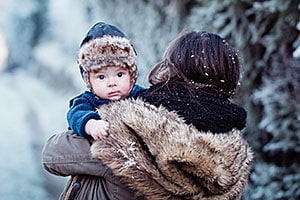Key points
- Rates of RSV, as well as many other infectious diseases, are higher among the Alaska Native population than among non-Natives in Alaska.
- CDC provides support for research studies on the control and prevention of infectious diseases, including RSV.

Overview
Children who are American Indian or Alaskan Native are 4-10 times more likely to get severe RSV, compared to other communities.
Some studies have shown that RSV in Alaska Native children from the Yukon Kuskokwim (YK) Delta (in Southwest Alaska) is associated with a hospitalization rate three times higher than that reported for the general U.S. child population. Alaska Native infants reportedly experience one of the highest hospitalization rates for lower respiratory tract infection (LRTI) and RSV among U.S. children.
CDC activities
Prevention of RSV in Alaska Natives is one of the program's priority activities. That's because the rates of RSV, as well as many other infectious diseases, are higher among the Alaska Native population than among non-Natives in Alaska.
The Arctic Investigations Program (AIP) is a branch of CDC located in Anchorage, Alaska. It is comprised of epidemiologists, laboratorians, research nurses, statisticians, and support staff. AIP provides support for research studies on the control and prevention of infectious diseases, including RSV. Research areas include medical care, applied epidemiology, laboratory diagnosis, and biostatistical sciences.
The RSV Surveillance in Native American Persons (RSV SuNA) collaboration monitors for RSV-associated hospitalizations and outpatient visits among Native American persons and is conducted on the Navajo Nation, White Mountain Apache Tribal Lands, and in Alaska. Additional information about other research and surveillance activities among Alaska Native persons may be provided by the Arctic Investigations Program.
